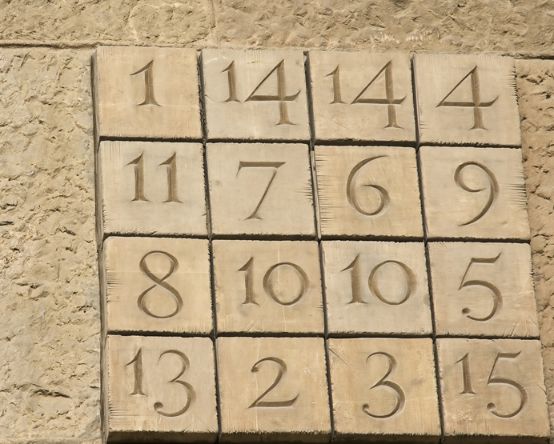A complete cycle
With the help of combinatorial and numerical analysis, Felix Pachlatko comes to the conclusion that Bach's Orgebüchlein is intended as we know it.

The Orgelbüchlein is Bach's earliest collection of works with a pedagogical focus. It consists of 182 pages with staves, above which 164 titles of chorales are entered, although only 45 of these are performed musically as organ chorales (and one fragment). As Bach abandoned work on this compendium for reasons that remain unclear, the organ booklet is considered a torso. Felix Pachlatko, the former cathedral organist in Basel for many years, has a particular fondness for counting and combinatorial gimmicks. He has now succeeded in proving that the page numbers, the ordinal numbers and the bar quantities of the pieces performed as well as the first letters of all the chorale beginnings can be represented as magic squares. The seemingly unfinished formulation of the title page can even be converted into a three-dimensional magic cube. Pachlatko reports that the determination of the valid numbers was a greater challenge than the calculation of the squares themselves, and indeed he sometimes had to prepare his material on the edge of speculation. Nevertheless, he succeeds in proving that both the seemingly unfinished form of the complete manuscript and the inventory of the completed organ chorales are based on Bach's meticulous advance calculations.
One may take whatever view one wishes of such numerical games, but it cannot be denied that here networks of relationships interlock on different levels, regardless of whether these are audible or symbolically interpreted quantities. The resulting insights into the proportions of the entire collection as well as its sub-series - golden ratio as well as halved divisions - can only lead to the conclusion that the Orgelbüchlein (including the fragment) is a self-contained cycle that would not have tolerated any expansion. It becomes particularly interesting when the positions of many Orgelbüchlein chorales in the overall cycle and their concrete textual references are placed in relation to their numerical and figurative arrangements on the basis of far-sighted analyses; for here tangible approaches for their musical interpretation emerge. It is just a pity that Pachlatko is not familiar with the literature on other works by Bach that would certainly support his theses and that many of the formulations in the introduction and main section are tiresomely self-referential. Ultimately, however, Pachlatko's findings support the assumption that Bach also thought in dimensions and moved in circles that went beyond the musical and ecclesiastical.
Felix Pachlatko: Das Orgelbüchlein von Johann Sebastian Bach. Strukturen und innere Ordnung, (Wissenschaftliche Beiträge aus dem Tectum Verlag, Reihe Musikwissenschaft, Band 9), 360 p., € 44.95, Tectum, Marburg 2017,
ISBN 978-3-8288-3898-7








